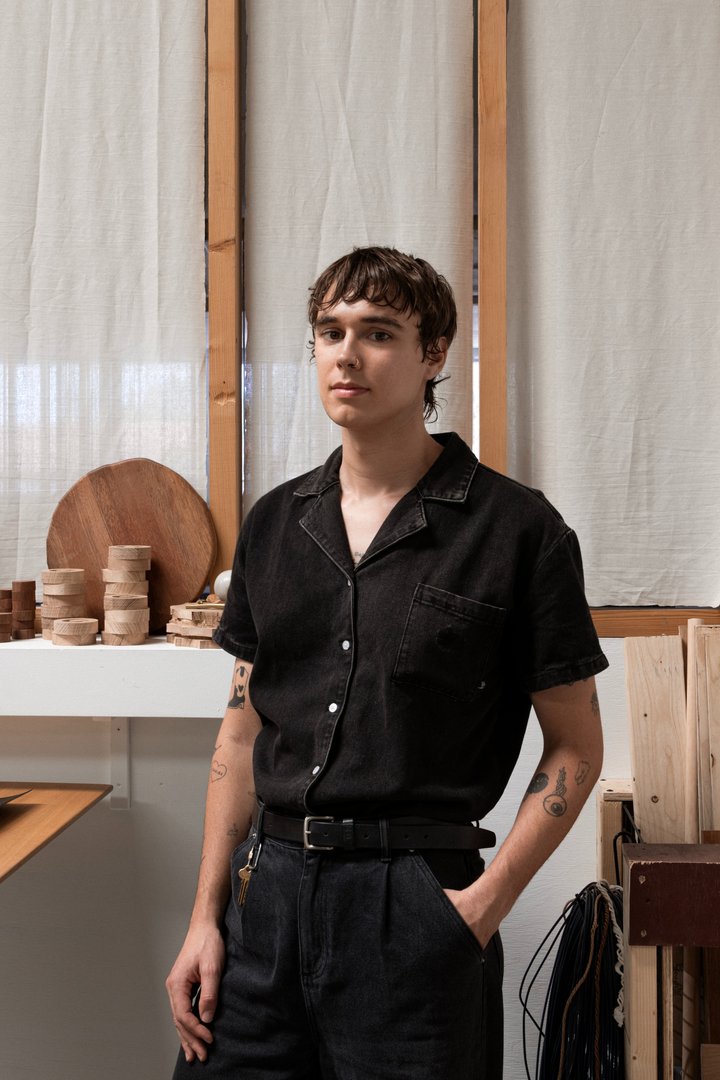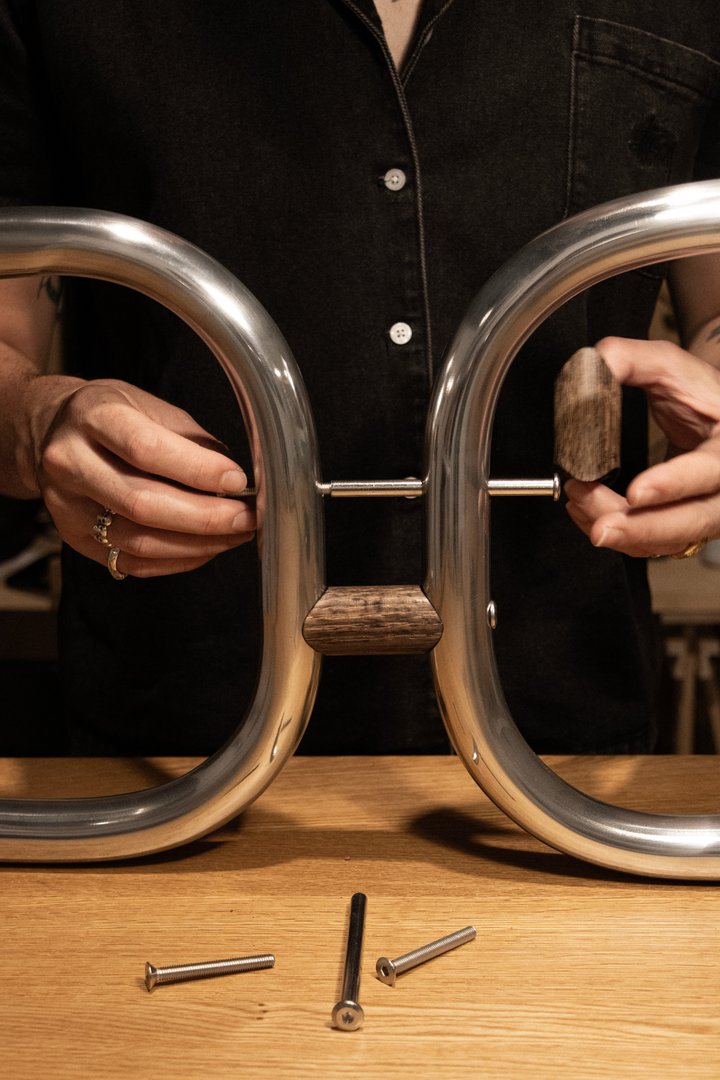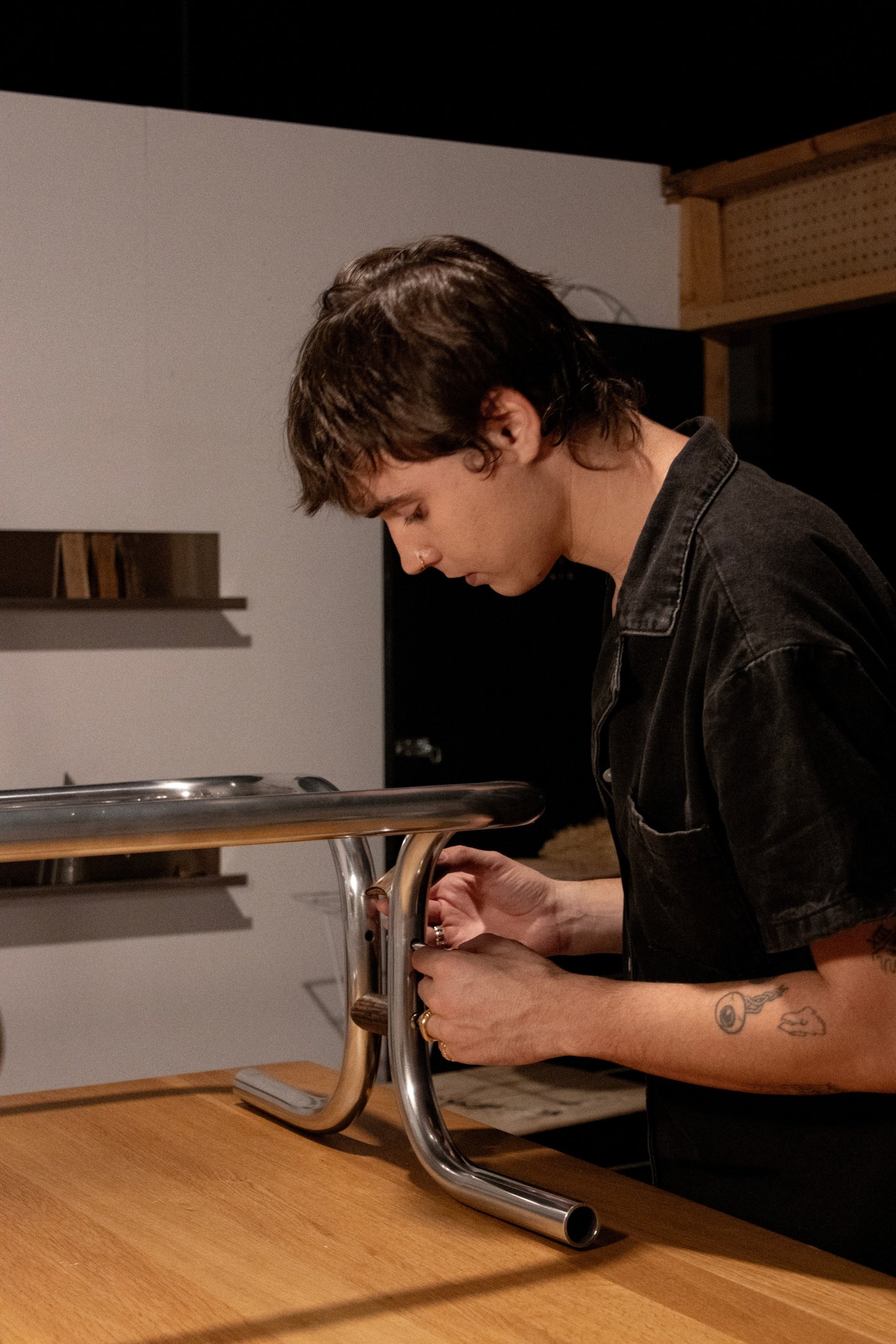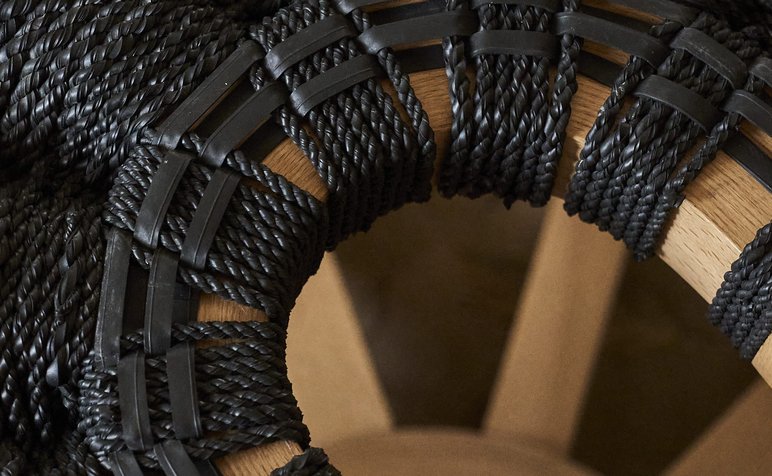
Locki Humphrey (they/them) is an artist and object designer with a focus on minimal intervention, craft and sustainability. Their process is driven by intuition and intention, an exploration of colour, material and the potential of recycled materials.
Locki is the exhibiting artist in By/Product 2025, the third iteration of the exhibition series which challenges artists to repurpose discarded items into luxury handmade goods. Shown for the first time in By/Product, Locki presents Oxide – a new furniture collection about material transformation.
Thinking about conscious use of materials and resources across industries – what are the possibilities and what can the world look like?
The world can be more inherently interconnected through shared components and materiality. We can move beyond the current individualistic approach to object design, where bespoke parts and manufacturing pathways are created for each new product and are fiercely protected.
Instead, designers can embrace utilising available materials, surplus materials and those deemed waste by adjacent industries to create new work. We can live in a world where objects are celebrated for their beauty as well as their flexibility, their ability to be pulled apart and transformed into something else. The use of existing materials can create a recognisable visual language within objects which provides a window into how they were created. We can begin to understand objects as only one iteration of an assemblage of materials, knowing it’s part of a larger life cycle, where each component has a history and a future.


How do you apply these ideals to your practice?
Every time I design a new object, I try to address three pillars: Minimal Intervention, Holistic Sustainability, and Local Manufacturing.
One of the guiding principles of my design practice is minimal intervention, which is a focus on designing objects which are made up of materials which are permanently altered from their original form as little as possible, without the need for bespoke parts.
Taking timber as an example, this is not to say that I don’t shape, stain, glue and seal timber, but rather that I strive to keep it as close to the original organic product as I can. Shapes are often organic and leave traces of the original grain or surface roughness; glues are simple wood glues, used only for timber-to-timber joins; stains are not oil based but rather water-based or natural stains; surface treatments used are organic waxes and topcoats which allow the timber to breathe and leave it biodegradable.
When looking at design through a lens of sustainability, I prefer to look not only at the origins and make-up of materials, but the future use and re-use of these materials too. When viewing the components of my furniture designs as in only a brief part of their long lifecycle, I’m able to ensure that even after my products are discarded the materials won’t cause environmental harm, and might even have a future use in different applications.
Materials like aluminium and glass are infinitely recyclable, and I prefer to use existing componentry and standardised fittings rather than manufactured plastic parts. I utilise organic materials like paper, wax, cork, grass and timber throughout my designs and recently I’ve been further exploring plant-based leathers and fabrics.
In addition to this, by designing for deconstruction this means I’m able to easily dismantle my designs into separate base elements for ease of repair or recycling; I’ll often use nails, screw fixtures, buttons, press studs, knots and tension to secure parts of my designs rather than relying on permanent glues and epoxies to bring together disparate materials.

Why is supporting the local manufacturing industry important for you?
Despite the added cost, I strongly feel that keeping my manufacturing local not only helps to support and grow a robust network of Australian makers and manufacturers, but also allows me to keep my furniture made to order. Slow furniture is inherently more sustainable as there is reduced waste in the form of dead stock. Whilst the end price inevitably reflects the increased cost of manufacturing in Australia rather than overseas, I prefer to be able to consult with and lean on local artisans to help me create the objects I design and ultimately offer a more unique product. I think Australia deserves to have a strong local manufacturing market for furniture, and I think that this is achievable, but not without support from local designers.
Find out more about Locki's practice and their exhibition in the Project Space, By/Product, 9 May – 14 June 2025.
Find out more about Conscious Craft – a movement to redefine our relationships with materials in a considered, responsible and responsive way.
